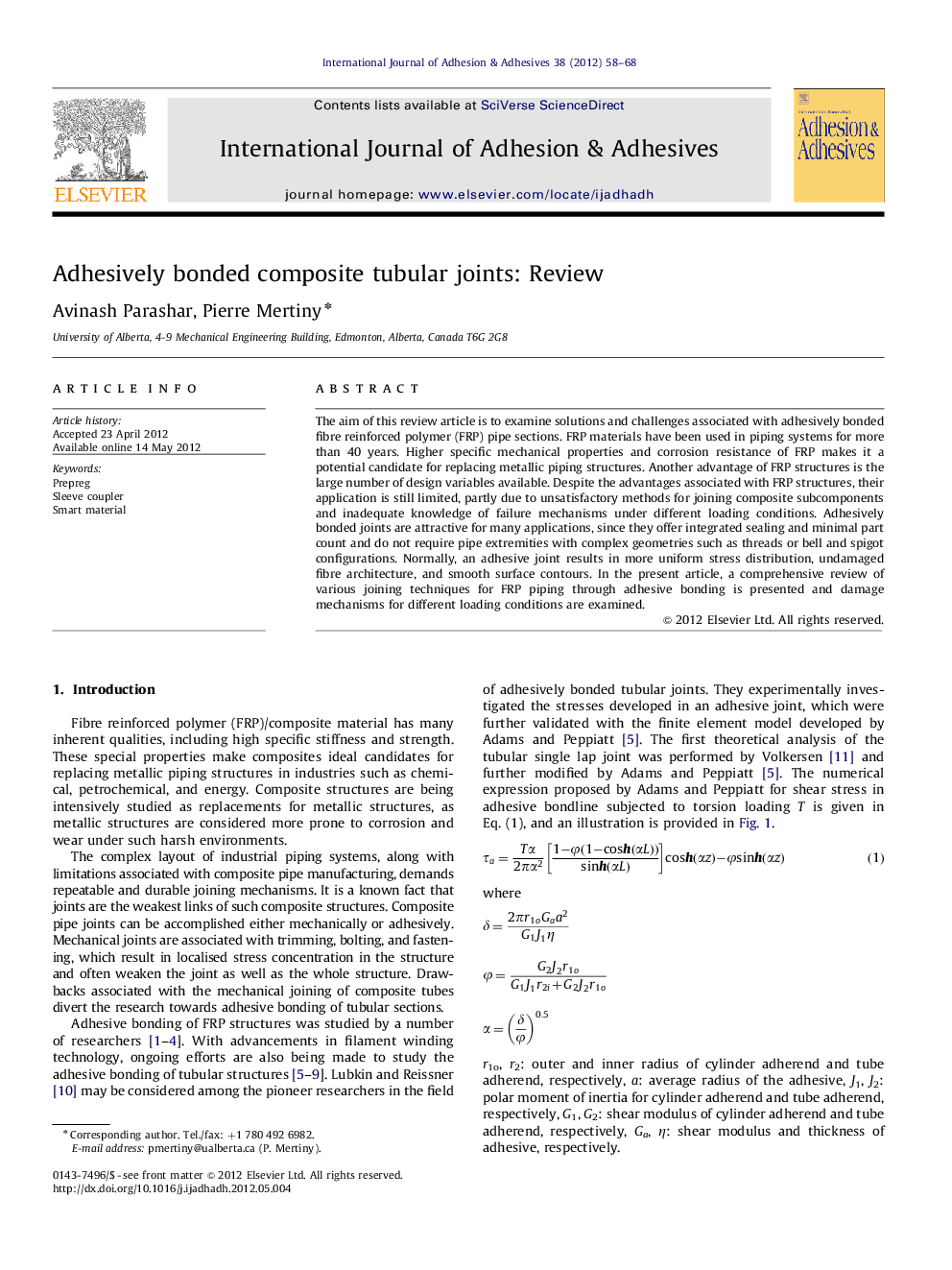| Article ID | Journal | Published Year | Pages | File Type |
|---|---|---|---|---|
| 776974 | International Journal of Adhesion and Adhesives | 2012 | 11 Pages |
The aim of this review article is to examine solutions and challenges associated with adhesively bonded fibre reinforced polymer (FRP) pipe sections. FRP materials have been used in piping systems for more than 40 years. Higher specific mechanical properties and corrosion resistance of FRP makes it a potential candidate for replacing metallic piping structures. Another advantage of FRP structures is the large number of design variables available. Despite the advantages associated with FRP structures, their application is still limited, partly due to unsatisfactory methods for joining composite subcomponents and inadequate knowledge of failure mechanisms under different loading conditions. Adhesively bonded joints are attractive for many applications, since they offer integrated sealing and minimal part count and do not require pipe extremities with complex geometries such as threads or bell and spigot configurations. Normally, an adhesive joint results in more uniform stress distribution, undamaged fibre architecture, and smooth surface contours. In the present article, a comprehensive review of various joining techniques for FRP piping through adhesive bonding is presented and damage mechanisms for different loading conditions are examined.
